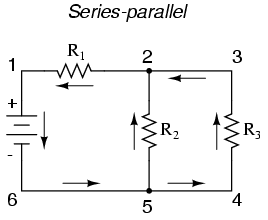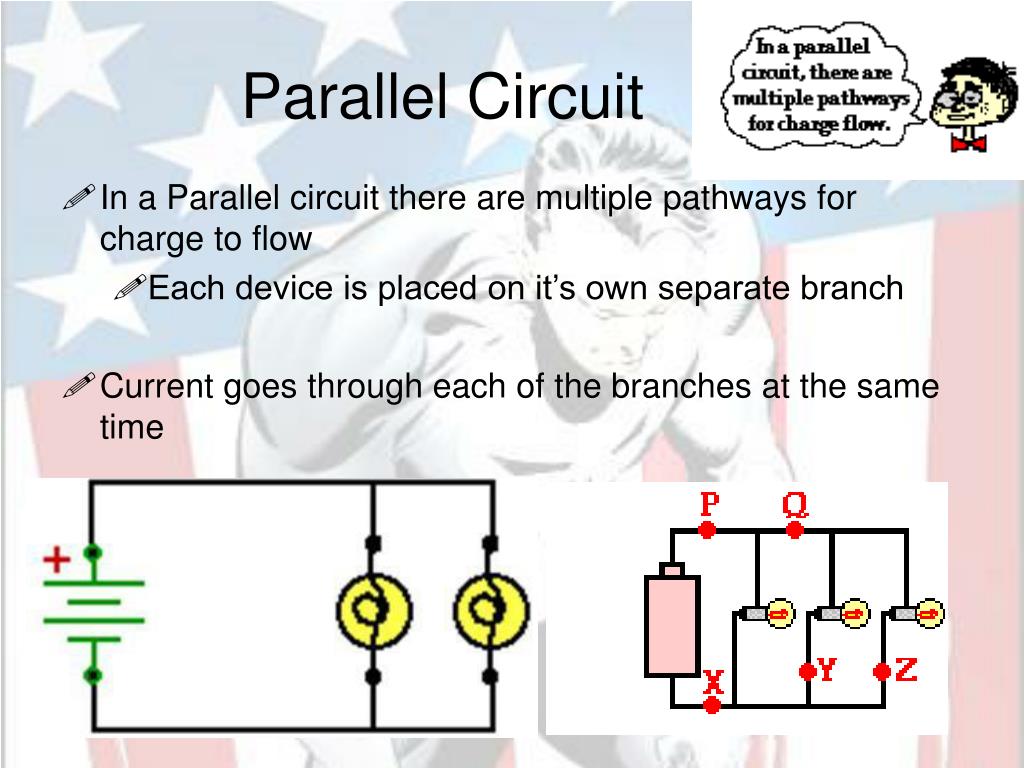

The defining characteristic of a parallel circuit, by contrast, is that all components share the same two equipotential points. It also means that the sum of all voltages dropped by load devices must equal the sum total of all source voltages, and that the total resistance of the circuit will be the sum of all individual resistances:
#SERIES AND PARALLEL CIRCUITS SERIES#
Series circuits are defined by having only one path for current, and this means the steady-state current in a series circuit must be the same at all points of that circuit. It would be the equivalent of having different rates of water flow at different locations along one length of pipe. In order for current to have different values at different points in a series circuit indefinitely, electric charge would have to somehow appear and disappear to account for greater rates of charge flow in some areas than in others. The principle of current being the same everywhere in a series circuit is actually an expression of a more fundamental law of physics: the Conservation of Charge, which states that electric charge cannot be created or destroyed. This means there can be only one value for current anywhere in the circuit, the exact same current for all components at any given time. The defining characteristic of a series electrical circuit is it provides just one path for current. The two circuit types are shown here, with squares representing any type of two-terminal electrical component: These rules fall neatly into two categories: series circuits and parallel circuits. This is why our homes are wired up with parallel circuits.In addition to Ohm’s Law, we have a set of rules describing how voltages, currents, and resistances relate in circuits comprised of multiple resistors. Parallel circuits are useful if you want components to continue to work, even if one component has failed. And, unlike a series circuit, the lamps stay bright if you add more lamps in parallel. In a parallel circuit, if a lamp breaks or a component is disconnected from one parallel wire, the components on different branches keep working.

A circuit with a battery and two lamps connected in parallel. If you follow the circuit diagram from one side of the cell to the other, you can only pass through all the different components if you follow all the branches.

In parallel circuits different components are connected on different branches of the wire. They also use less wiring than parallel circuits. Series circuits are useful if you want a warning that one of the components in the circuit has failed. In a series circuit, if a lamp breaks or a component is disconnected, the circuit is broken and all the components stop working. If you put more lamps into a series circuit, the lamps will be dimmer than before. If you follow the circuit diagram from one side of the cell to the other, you should pass through all the different components, one after the other, without any branches.Ī circuit with a battery and two lamps connected in series

You get several components one after the other. In a television series, you get several episodes, one after the other. If there are branches it's a parallel circuit. If there are no branches then it's a series circuit. The components in a circuit are joined by wires. There are two types of circuit we can make, called series and parallel.


 0 kommentar(er)
0 kommentar(er)
